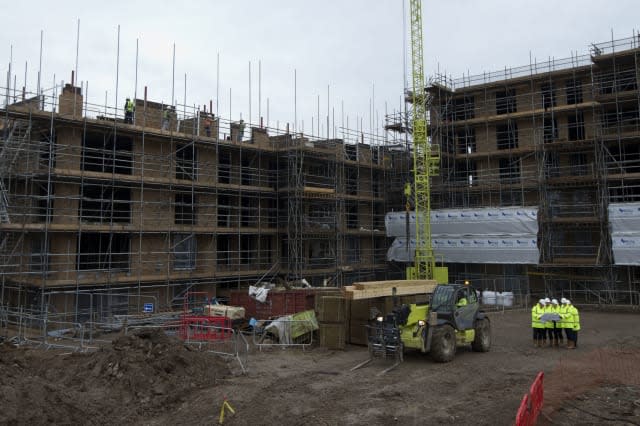Proportion of affordable homes being built in London halves

New figures have revealed that the proportion of affordable new homes being built in London has halved since 2011. In that year 74 social homes were built for every 100 private homes. By 2014 that figure was just 40 per 100. It means that despite a recent surge in house-building, there is still a massive shortage of social housing for Londoners.
Estates Gazette, which conducted the research, said that this was due in no small part to the fact that the social housing budget was slashed by 60% in 2010. It meant less of a financial incentive for developers to build social housing into their projects. Given the rising cost of land, they increasingly calculated that it wasn't worth building the social homes, and they would be better off making what is known as an S106 agreement - where they pay over a sum for every social housing unit they fail to deliver on each project.
Between 2011 and 2013, they handed over £467 million for social housing to avoid having to build it themselves. However, the study found that anyone wanting to build this missing social housing would need to spend £1.3 billion. This, they said, amounted to a shortfall of £800 million.
What next?
Homelessness charity Shelter is among many groups calling for more social housing to be built. The new Conservative government's proposed solution was outlined in its manifesto, and takes a very different approach. It has decided to extend the Right to Buy scheme to the 1.3 million people living in housing association properties - enabling them to buy them with as much as a 70% discount (up to £102,700 in London).
You would be forgiven for thinking that this would have the opposite effect, as once purchased, these will follow the pattern established by privately owned council houses, and quickly increase in value until they are no longer affordable. As a result, the quantity of social housing will fall. It's one of the reasons why the plans have been attacked by everyone from the Confederation of British Industry to property firm Jones Lang LaSalle.
%VIRTUAL-ArticleSidebar-property-guide%
However, the government insists that its approach will work. The idea is that the right-to-buy scheme will be funded by requiring councils to sell off their most expensive council properties when they become available, and replace them with more affordable social homes. Around 15,000 houses and flats are expected to become available in this way each year, raising around £4.5 billion a year. The government says that the sales would raise the money required to replace the housing, expand right-to-buy, and leave £1 billion left over to prepare brownfield sites for housing.
The only fly in the ointment appears to be that the National Housing Federation has calculated that it won't raise enough to cover all the costs of right-to-buy, let alone the cost of enough new housing to make up the shortfall.
There will be those who argue that a simpler approach would either have been to increase the social housing subsidy again, or to make developers pay more money if they decide not to build social housing, so that the government can build the missing homes themselves.
But what do you think? Let us know in the comments.
Property on AOL Money
Downton Abbey house up for sale - for £3.95 million
Sussex farmer turns down £275million offer for 550 acres of land
David Hasselhoff puts home on the market for £1.5m





